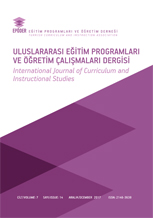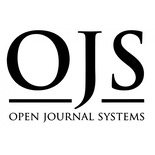The development of DACEM curriculum evaluation criteria
Abstract
The aim of this study is to analyse and develop the "Curriculum Evaluation Criteria" used in curriculum evaluation within the scope of "Demirel Analytical/Beneficiary Curriculum Evaluation Model (DACEM)" developed by Demirel. The evaluation and revision of evaluation criteria in the DACEM was carried out in three basic stages. In the first stage, the original criteria to be used in the evaluation of secondary education curricula based on the curriculum evaluation model were rearranged and revised by three curriculum development specialists for the assessment of secondary high schools’ curricula. In the second stage, the results obtained at the first stage were retested in the field and then reviewed and revised by the five curriculum development experts. During the third and last stage of the study the criteria set at the second stage were reviewed and revised by twenty-two curriculum development experts. The finalised criteria covered the general characteristics of the five basic dimensions of the model. These five dimensions were context, objectives / attainments, content, learning- teaching process and measurement-evaluation. Researchers can utilize all or some of these criteria specified in the context of the relevant dimensions.
Downloads
References
Demirel, Ö. (2012). Kuramdan Uygulamaya Eğitimde Program Geliştirme. (18.Baskı) Ankara: Pegem Akademi.
---------------. (2013). Kuramdan Uygulamaya Eğitimde Program Geliştirme. (20.Baskı) Ankara: Pegem Akademi.
Ertürk, S. (1973). Eğitimde Program Geliştirme. Ankara: Yelkentepe Yayınları: 9.
Milli Eğitim Bakanlığı. (2012). Ortaöğretim Projesi Eğitim Programları Reformu Yararlanıcı Değerlendirme Araştırması, Dünya Bankası ve Milli Eğitim Bakanlığı Ortak Projesi Raporu. MEB Avrupa Birliği ve Dış İlişkiler Genel Müdürlüğü Yayınları. Nisan, Ankara.
Oliva, P. F. (1988). Developing the Curriculum. Second Edition. Boston: Scott, Foresman and Company. Ornstein, A.C. & Hunkins, F.B. (1988). Curriculum: Foundations, Principles and Issues. New Jersey:
Prentice Hall, Englewood Cliffs.
Pratt, D. (1980). Curriculum: Design and Development. San Diego: Harcourt Brace Jovanovich.
Saylor, J.G. & et.al. (1981). Curriculum Planning for Better Teaching and Learning. New York: Holt, Rinehart and Winston.
Stufflebeam, D. L. (1999). Foundational Models for 21st Century Program Evaluation. State of the Evaluation Art and Future Directions in Educational Program Evaluation Invited Symposium at the annual meeting of the American Educational Research Association; Montreal, Quebec, Canada, April 20.
Varış, F. (1979). Eğitimde Program Geliştirme. Ankara: A.Ü. Eğitim Fakültesi Yayınları, 53.
Yazçayır, N., Selvi, K. ve Ö. Demirel. (2012). Eğitim programlarının değerlendirme ölçütleri, 2. Ulusal Eğitim Programları ve Öğretim Kongresinde sözlü olarak sunulmuştur. Abant İzzet Baysal Üniversitesi. Bolu.





